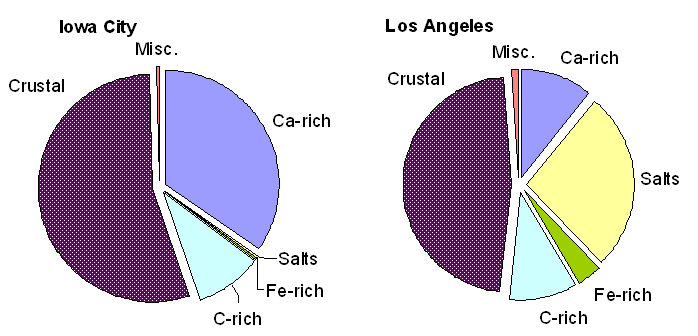
Use of passive samplers to estimate PM10-2.5 by light microscopy
Distributable Zip File With Automated Analysis Routines and Spreadsheets - 4 MB
Publications from this work.
Light Microscopy Method. Ott, D.K., W. Cyrs, and T. M. Peters. 2008. Passive measurement of coarse particulate matter, PM10-2.5. J. Aerosol Sci. 39 (2):156-167. http://dx.doi.org/10.1016/j.jaerosci.2007.11.002
Shelter Design. Ott, D.K., and T. M. Peters. 2008. A shelter to protect a passive sampler for coarse particulate matter, PM10-2.5. Aerosol Sci. Technol. 42(4): 299-309. http://dx.doi.org/10.1080/02786820802054236 - Shelter Construction
Field Use. Ott, D.K., N.K. Kumar, and T. M. Peters. 2008. Passive sampling to capture spatial variability in PM10-2.5. Atmospheric Environment 42 (4):746-756. http://dx.doi.org/10.1016/j.atmosenv.2007.09.058
Chemical Speciation of Particles
Analysis by computer-controlled scanning electron microscopy enables measurement of PM10-2.5 composition.

Measurements made by Gary Cassucio of RJ Lee Group.
Some history of Iowa's involvement in sampling
The Wagner-Leith passive sampler operates by collecting particles by gravity settling, diffusion, and turbulent inertia. Microscopy is used to determine particle size and surface loading. These data may be used to estimate particulate matter (PM) concentration.
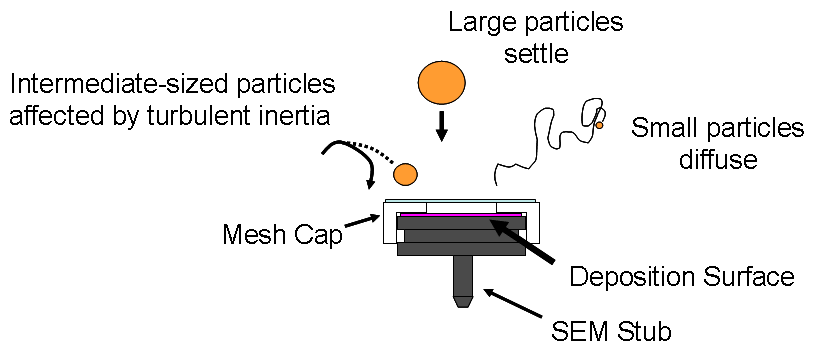
This method was limited in some ways because knowledge of wind speed is needed to estimate the effects of turbulent intertial deposition.
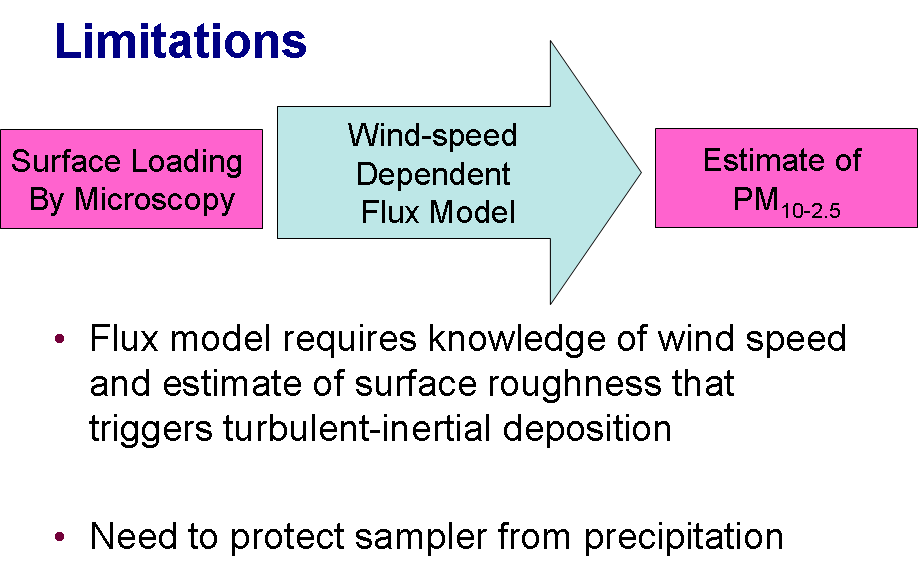
In his PhD dissertation, Darrin Ott developed a shelter for this sampler that reduces the effects of turbulent inertial deposition and makes the sampler easier to deploy in an ambient setting. He did testing in a wind tunnel as shown below.
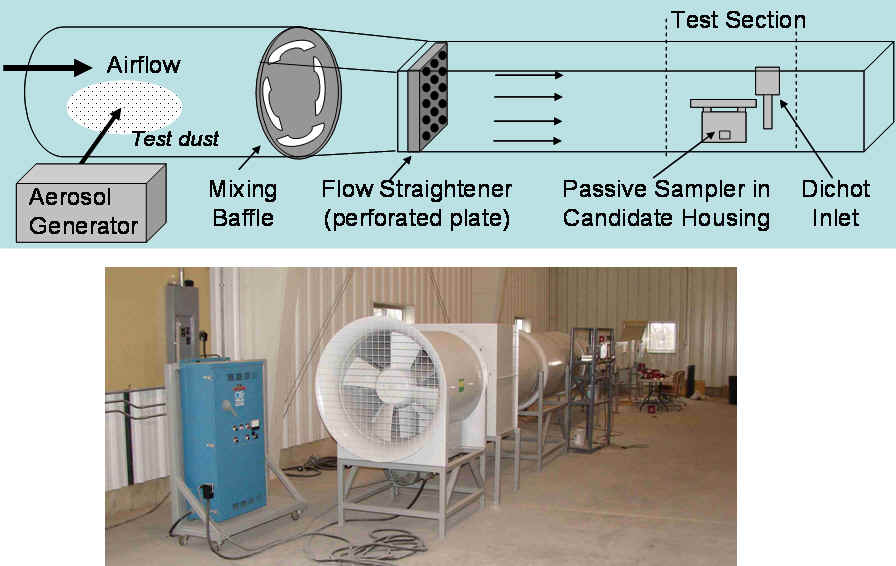
His results showed that a relatively simple design based on two flat plates drastically reduces wind-dependent deposition as shown below.
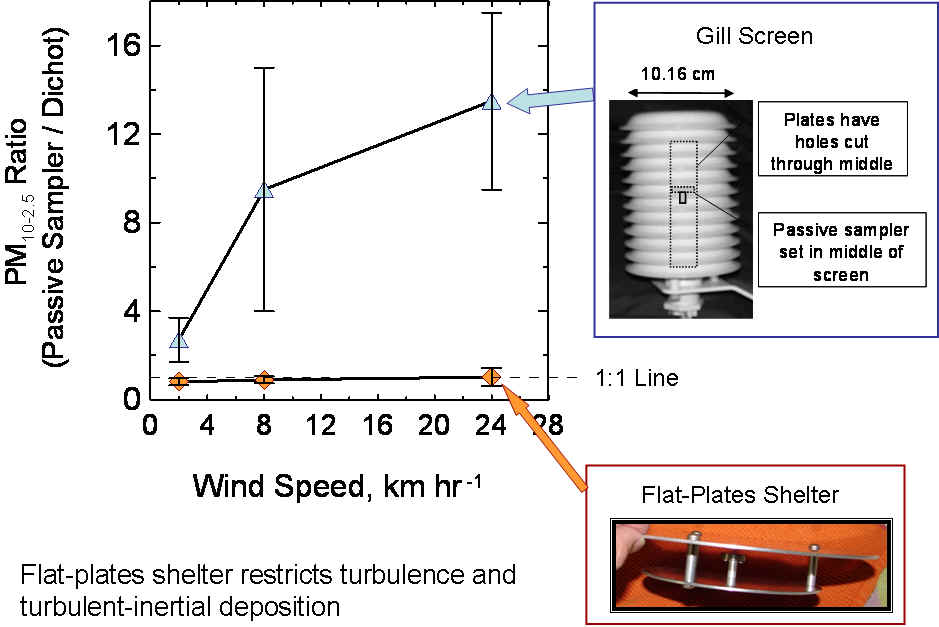
The flat-plates shelter also keeps the passive sampler from getting wet.
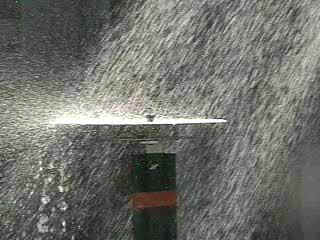
Estimates of PM10-2.5 agree well with dichotomous sampler results.
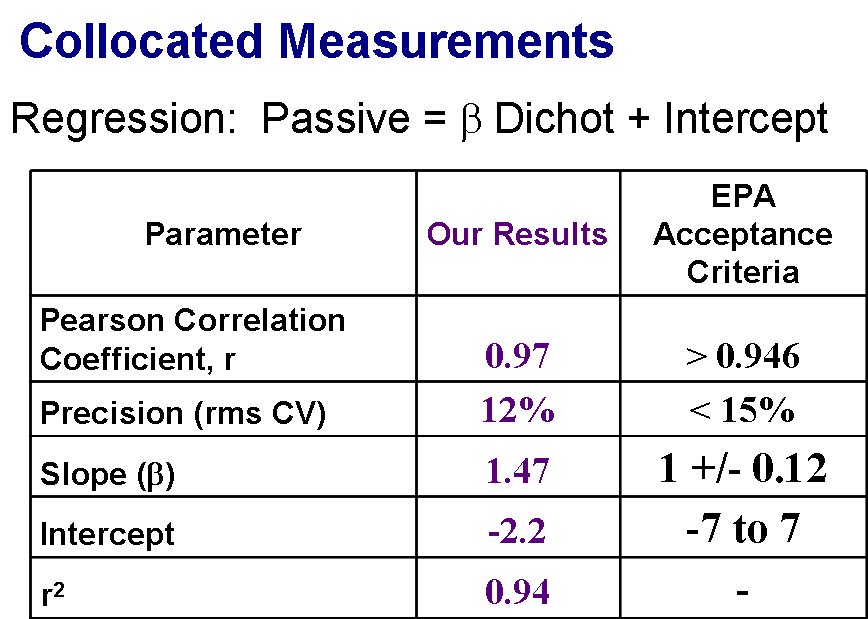
We've used these samplers to assess coarse particle variability in metro areas.
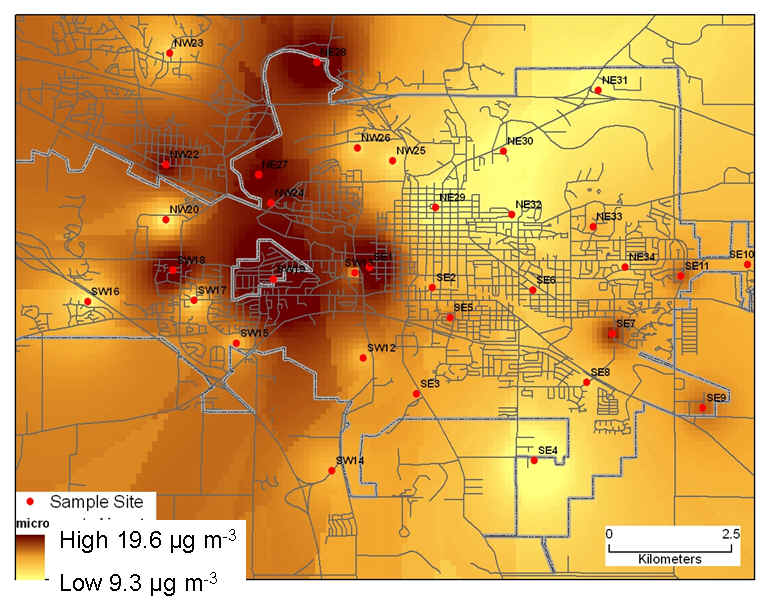
Photos from the field.
| Sampling in Los Angeles
|
Sampling in Iowa
|
Funding: Pilot grant from CHEEC and US EPA.